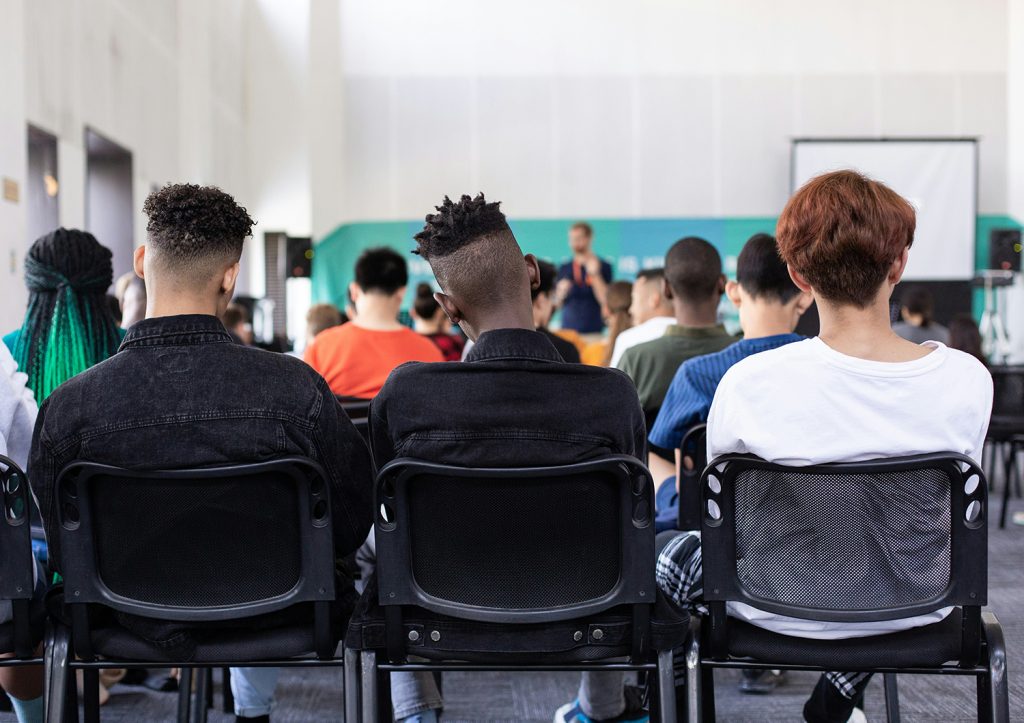Most elementary and middle schools ban nonacademic use of cellphones, NCES finds
WASHINGTON — A collection of new data sheds light on the state of school crime and safety, as well as the school environment, in U.S. public schools, including a finding that 76 percent of public schools prohibit non-academic use of cell phones or smartphones during school hours.
Also, 90 percent of public schools said they increased social and emotional support for students in response to the coronavirus pandemic in 2021-22, according to the new survey results from the National Center for Education Statistics (NCES), the statistical center within the U.S. Department of Education’s Institute of Education Sciences (IES).
In addition, 67 percent of public schools recorded at least one violent incident in 2021-22.
The data also point to a decline in high/secondary schools reporting at least one incident of distribution, possession, or use of illegal drugs, at 71 percent, compared with such incidents in 2017-18 (76 percent) and 2019-20 (77 percent).

“These critically important data reveal some of the challenges public schools face in keeping the focus on teaching and learning, such as violence, drug use, and bullying,“ said NCES Commissioner Peggy G. Carr. “At the same time, we gain insights into ways public schools are stepping up with supports beyond academics, such as the finding that nine in ten public schools increased social and emotional supports for students.”
The new data come from NCES’s School Survey on Crime and Safety, a nationally representative survey of about 4,800 public elementary and secondary schools. The study was conducted from February 15 to July 19 of 2022. .
The report and technical information for the School Survey on Crime and Safety are available online at https://nces.ed.gov/pubsearch/pubsinfo.asp?pubid=2024043.
Key Findings
School Environment
• About 857,500 violent incidents and 479,500 nonviolent incidents were recorded by public schools in 2021-22.
• Sixty-seven percent of public schools reported having at least one violent incident. Also, 59 percent reported having at least one non-violent incident.
• About 71 percent of public high/secondary schools reported at least one incident of distribution, possession, or use of illegal drugs in 2021-22. This figure represented a drop when compared with 2017-18 (76 percent) and 2019-20 (77 percent).
• The school crime and safety data for 2021-22 show a 1-point increase in public schools reporting at least one hate crime (3 percent), compared with 2 percent in the 2019-20 and 2017-18 school years.
• Schools were also asked about factors that limited their efforts to reduce or prevent crime. The two factors most often reported as limiting these efforts “in a major way” were lack of or inadequate alternative placements or programs for disruptive students (30 percent) and inadequate funding (27 percent).
Bullying and Cyberbullying
• A higher percentage of middle schools reported bullying on campus at least once per week in 2021-22, with 28 percent saying it took place at least once a week, compared with 15 percent for high/secondary schools and 10 percent for elementary schools.
• Similarly, cyberbullying at school or away from school at least once a week was reported by 37 percent of middle schools and 25 percent of high/secondary schools, compared to 6 percent of elementary schools.
Safety and Security Practices at Public Schools
• Public schools also reported on the different types of security staff present on campus at least once a week. About 46 percent of traditional public schools in 2021-22 had school resource officers (SROs). This compares with 18 percent at charter schools. In contrast, a higher percentage of charter schools reported having security officers or security personnel (35 percent) compared with traditional public schools (25 percent).
• In addition, the data show a decline in the proportion of public schools with sworn law enforcement officers who routinely carry a firearm at school. The 2021-22 figure was 45 percent, down from 51 percent in 2019-20. However, the most recent figure was not measurably different from the 47 percent of law enforcement officers in public schools with a firearm in 2017-18.
• During the 2021-22 school year, 92 percent of public schools said they had a formal plan to prepare for and respond to multi-country or worldwide pandemic disease. Schools had written plans describing the procedures to be performed in various other crisis scenarios as well, including active shooters (96 percent), natural disasters (96 percent), suicide threats or incidents (94 percent), and bomb threats (92 percent).
• In 2021-22, higher percentages of elementary schools (87 percent), middle schools (77 percent), and schools with other grades combined (70 percent) reported having policies that prohibited the nonacademic use of cellphones in school, compared to high/secondary schools (43 percent).
Supports for Students
• Public schools were asked whether they engaged in restorative practices with their students (often referred to as “restorative justice”). Fifty-nine percent of public schools said they did, about the same proportion as in 2019-20 but higher than the 42 percent in 2017-18.
• About 72 percent of charter schools reported involving students in restorative practices, which was higher than the percentage of traditional public schools (58 percent) that reported doing so.
• Forty-nine percent of public schools provided diagnostic mental health assessments in 2021-22 to evaluate students for mental health disorders. This figure was down from 55 percent in 2019-20, but not measurably different from 2017-18. Thirty-eight percent of schools provided treatment to students for mental health disorders in 2021-22. This figure was down from 2019-20 (42 percent) but not measurably different from 2017-18.
• About 90 percent of public schools offered individual mentoring, tutoring, or coaching of students by adults




